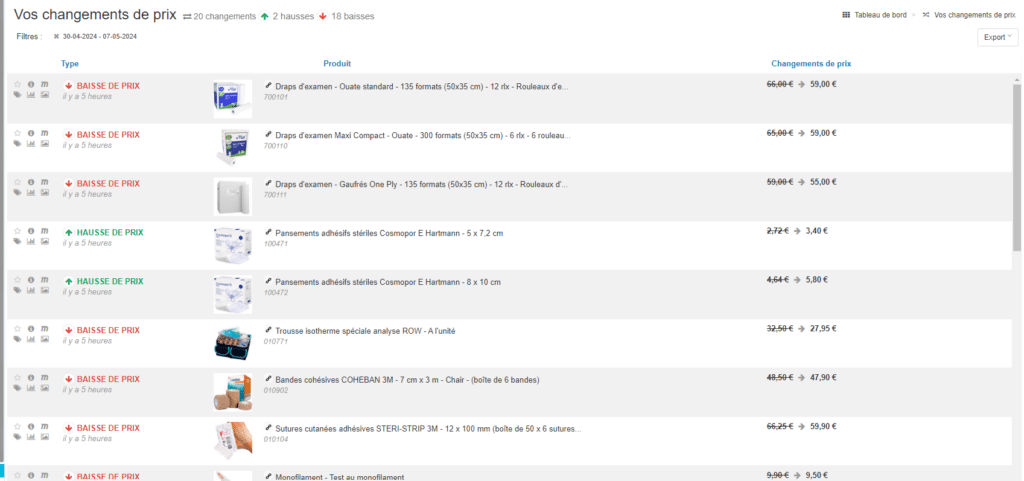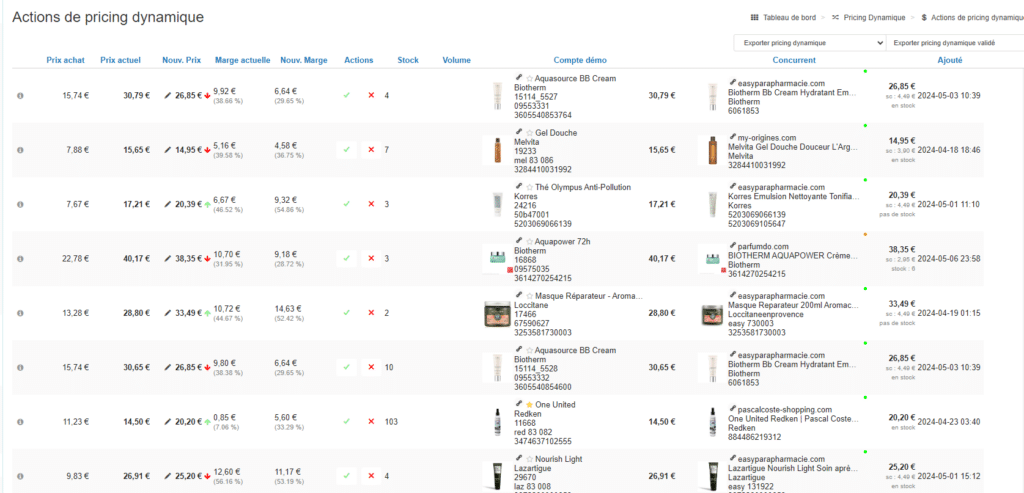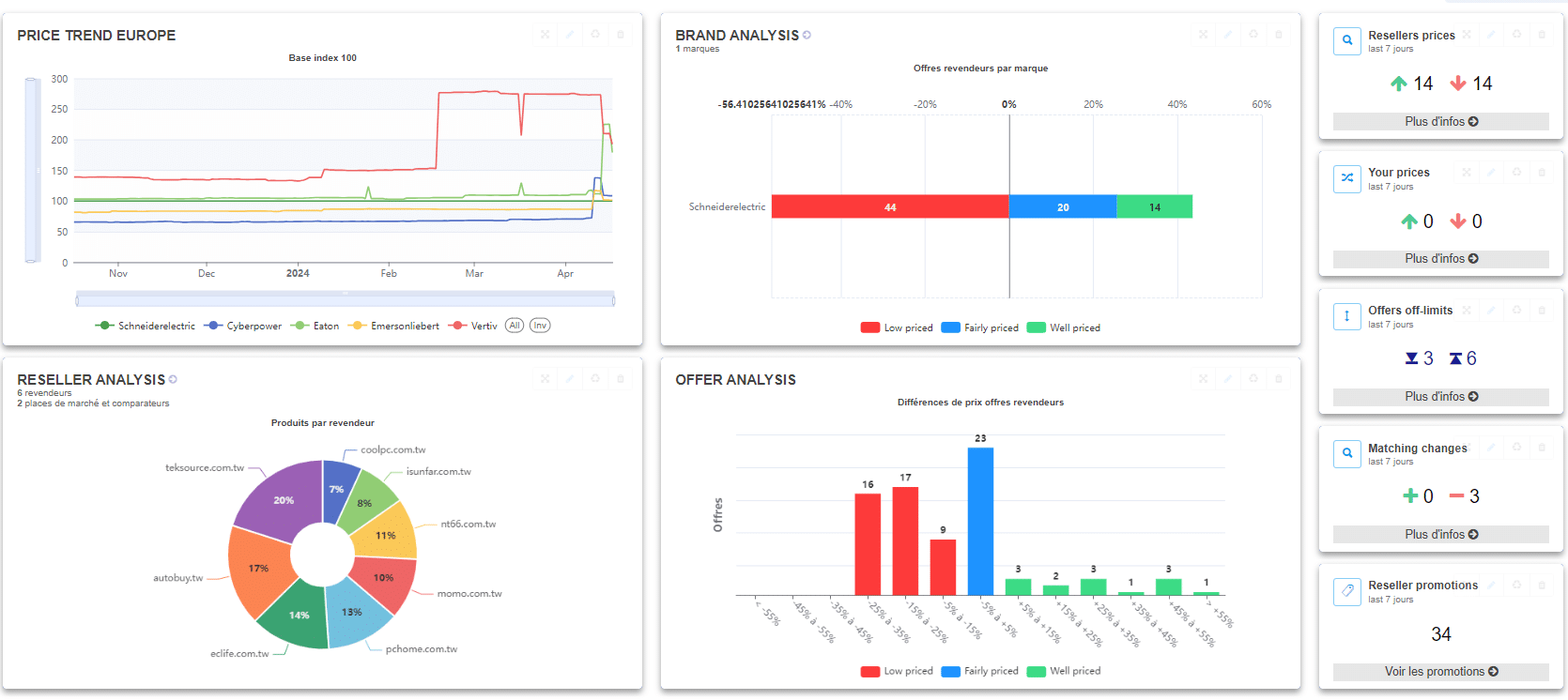The Omnibus Directive : a term that resonates more and more in e-commerce circles, but despite its importance, many retailers and manufacturers do not know it precisely or have doubts about how to take it into account in their pricing strategy.
In this article, we'll dive into the world of the Omnibus Directive, explaining its background, purpose, and providing practical tips for staying compliant.
What is the Omnibus Directive?
The Omnibus Directive (EU) 2019/2161 is a European regulation aimed at modernising and harmonising consumer protection rules in the European Union in the digital and e-commerce age. However, it applies to both physical warehouse and online businesses.
The new rules of the Omnibus Directive came into force on 28 May 2022, as specified in Article 10 of Ordinance No. 2021-1734.
Its objective is to ensure greater fairness and transparency regarding the commercial and pricing practices of merchants, retailers and marketplaces.

The main points of the Omnibus Directive concerning Pricing
1. 1. Price Transparency and Total Price Display
One of the main components of the Omnibus Directive concerns price transparency and the obligation to display the Total Price of a product or service.
The Total Price must be displayed at the beginning of the purchase process and must include all taxes, surcharges and shipping charges.
2. Transparency Regarding Promotions, Strikethrough Prices and Price Changes
In addition, in the context of a price reduction, a promotion, or sales, the Omnibus Directive makes it mandatory, alongside the updated price, to display the Reference Price, i.e. the lowest price offered in the last 30 days. The purpose of this regulation is to allow customers to clearly assess the discount made and to strengthen confidence in the accuracy of the information provided.
Professionals have the freedom to choose how to display the discount (absolute value, percentage, strikethrough price, etc.).
NB: There are two exceptions to this rule: perishable goods and progressive Early Booking for travel, for example.
3. Transparency Regarding Personalized Prices
The personalized prices applied by certain sites based on consumers' purchasing behavior should be clearly displayed. For example, offers based on recent purchase history, such as Amazon's with its recommended product carousel, should clearly state the original price, as well as the percentage and amount of the discount.

Risks of sanctions
Violators of these rules face up to two years in prison and a fine of €300,000 for misleading commercial practices. The DGCCRF will be responsible for ensuring compliance with these rules during its inspections, in particular during large-scale price reduction operations such as sales or "Black Friday".

Best Practices for Brands and Retailers
Now that we have a better understanding of what the Omnibus Directive means in terms of pricing, let's take a look at some best practices that brands and e-tailers can adopt to comply with this regulation while offering an optimal customer experience.
1. Price Transparency from the Start
Make sure that all pricing information is clearly displayed at the beginning of the purchase process, including taxes and shipping costs. Avoid hidden fees that might surprise customers at checkout
2. Clear Return & Refund Policy
Set up a transparent and easily accessible return and refund policy. Consumers need to know exactly what they can expect in terms of returns and refunds if something goes wrong with their purchase.
3. Verified Reviews
Be sure to only submit customer ratings and reviews that are verified by a reliable system to ensure that the reviews posted are from consumers who have used or purchased the products. Control and verification procedures must also be displayed and easily accessible by the consumer.
4. Protection of Personal Data
Make sure your website complies with GDPR data protection regulations. Obtain explicit consent from users to collect and process their personal data, and ensure that robust security measures are in place to protect that data from breaches.
5. Transparent Communication with Customers
Be transparent in your communications with customers. Provide clear information about the products and services you offer, and respond quickly and effectively to any questions or concerns raised by customers

What are the impacts on Pricing strategies and Dynamic Pricing tools?
1. Use Price Intelligence Tools
Price monitoring tools are used to monitor the prices charged by competitors and/or resellers and to monitor their compliance with the rules as well as market fluctuations. By using these tools strategically, businesses can adjust their own prices based on market trends while remaining competitive.
2. Implement a compliant Repricing Strategy
Repricing, or dynamic price adjustment, is a common practice to stay competitive in a fast-paced business environment. However, it is important to ensure that price adjustments comply with the regulations for advertising price reductions. By using intelligent algorithms and taking into account price intelligence data, companies can automate the repricing process while ensuring compliance with the Omnibus Directive.
Brands, on the other hand, can ensure that their resellers comply with its rules.
3. Ensuring Transparency and Integrity
In all pricing and repricing actions, transparency and integrity must be prioritized. Consumers must be able to trust the prices displayed and be assured that they are not victims of misleading marketing practices. By complying with regulations and taking an ethical approach to pricing, companies can build consumer trust and ensure their reputation in the marketplace.


The benefits of a more transparent pricing strategy
An Omnibus Pricing Strategy has a multitude of benefits for e-commerce, including :
- Improved price transparency and reliability : By accurately displaying discounts and complying with regulations, companies increase transparency in their pricing practices.
- Increased customer trust and satisfaction : Clear and honest pricing fosters customer trust, which can lead to better customer satisfaction and retention.
- Retention and acquisition of new customers : Ethical and transparent pricing can attract new customers while retaining existing ones, due to the increased trust it generates.
- Avoidance of deceptive pricing practices : By complying with the Omnibus Directive, online retailers avoid misleading practices that could damage their reputation.
- Promotion of fair competition : Fair pricing practices promote healthy and fair competition in the marketplace.
- Highlighting quality and value : By presenting prices based on real data, companies emphasize the quality and value of their products or services.
- Encouraging ethical practices : Pricing in line with the Omnibus Directive encourages companies to adopt ethical and transparent pricing practices.
- Contributions to sustainable growth : By building trusting relationships with customers and promoting fair competition, companies can foster sustainable business growth.

At Price Observatory, we offer advanced solutions for e-tailers and brands that allow you to adapt to the Omnibus Directive, ensuring your company's compliance while applying an optimized pricing strategy.
E-merchants, stay competitive while complying with price regulations in an efficient way, thanks to our Dynamic Pricing module from Price Observatory
Brands and Manufacturers, monitor your resellers' promotional practices with our powerful, reliable and easily accessible price monitoring tools
For personalized advice on the pricing of your products and the Omnibus Regulations, do not hesitate to contact our team of experts on our Price Observatory website. Contact us for a demo, a real-life test or information